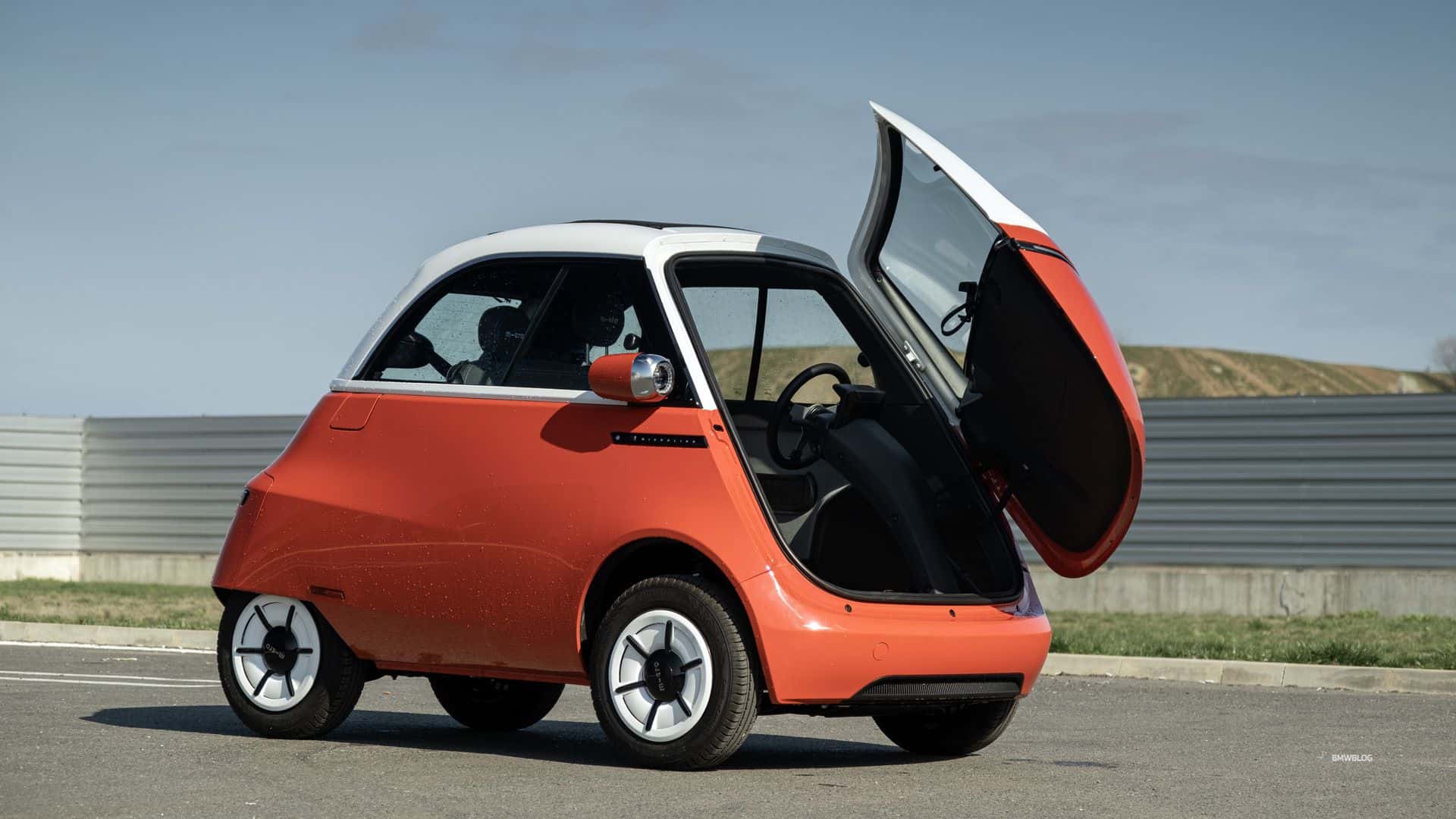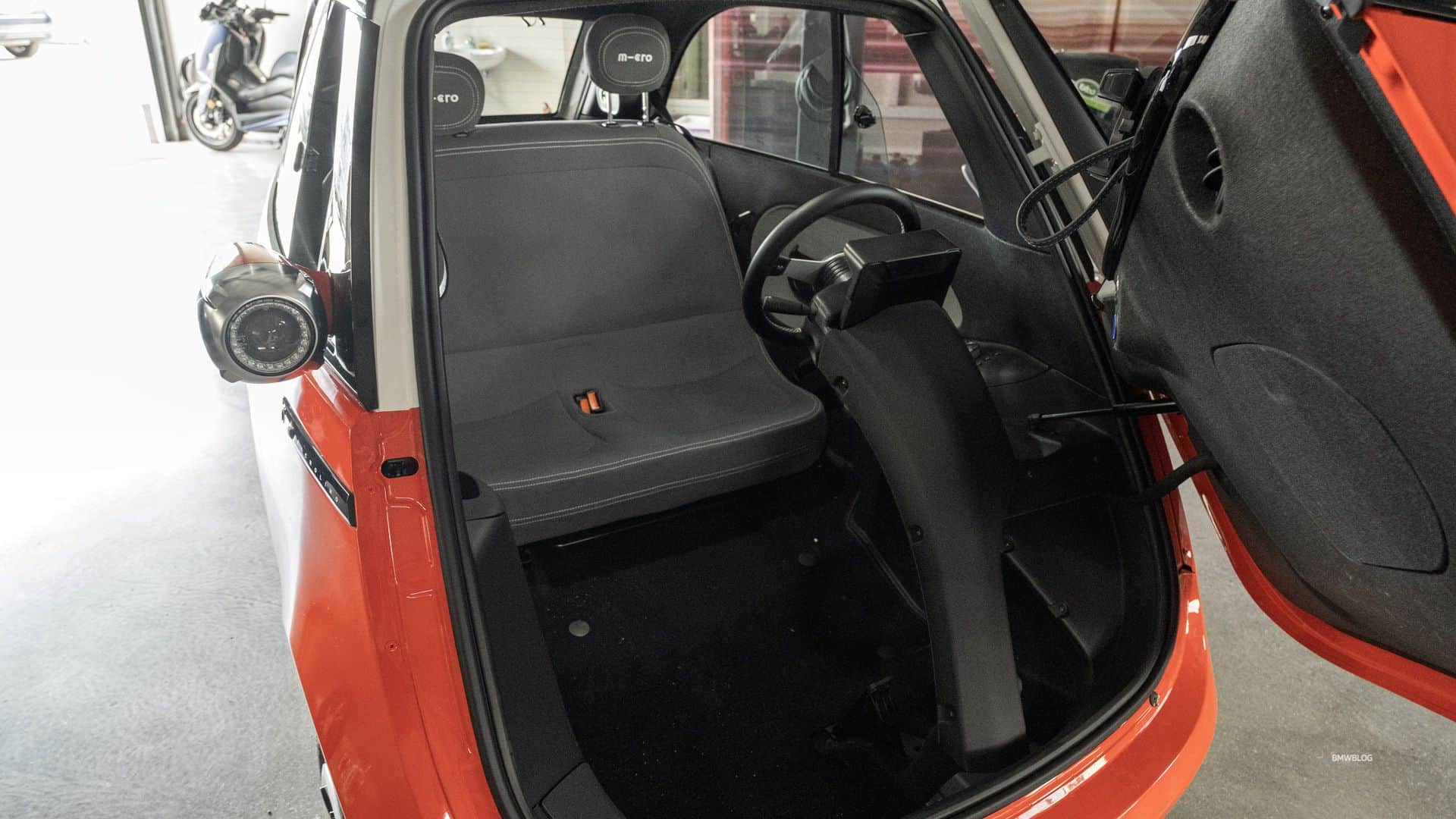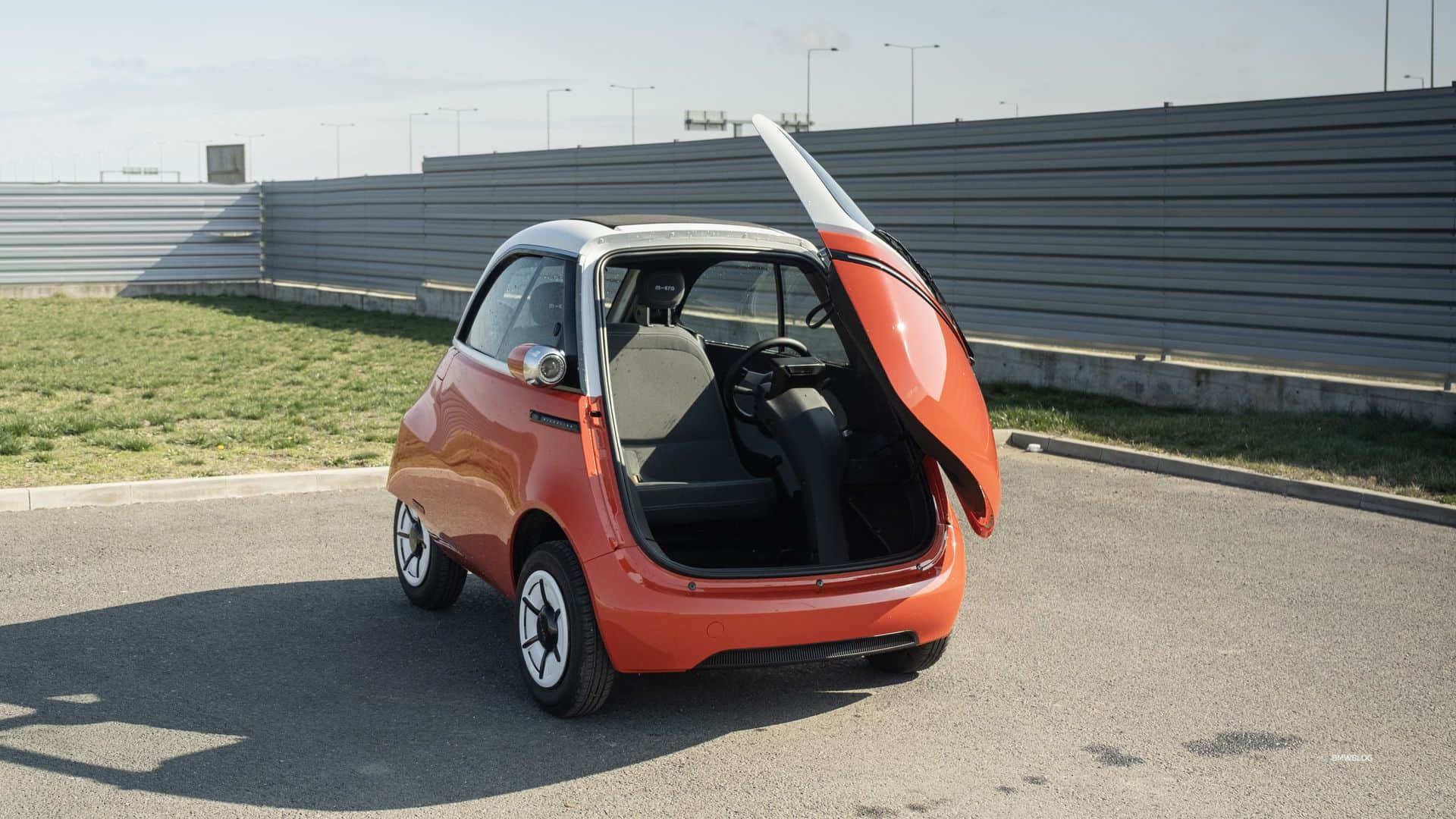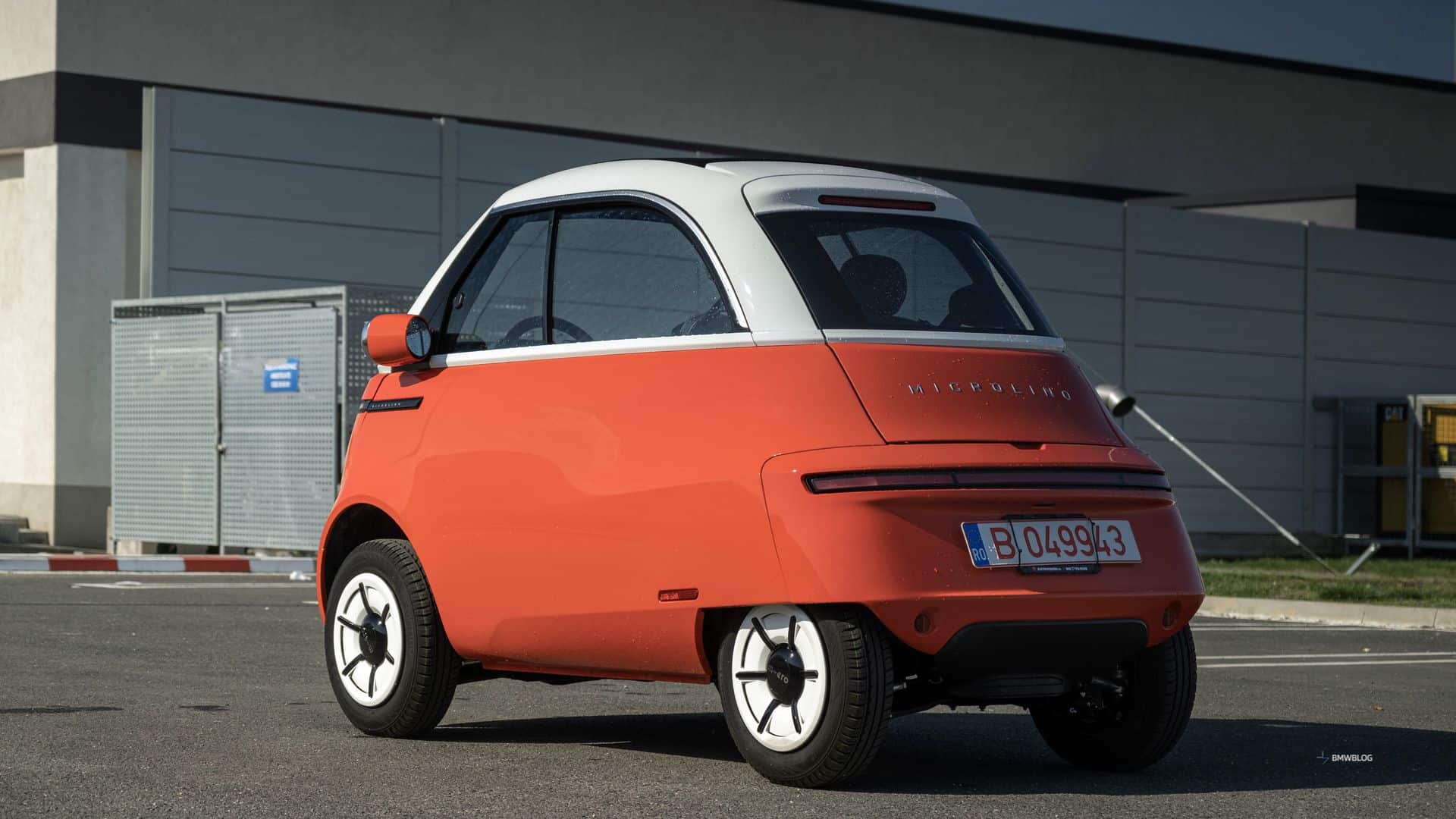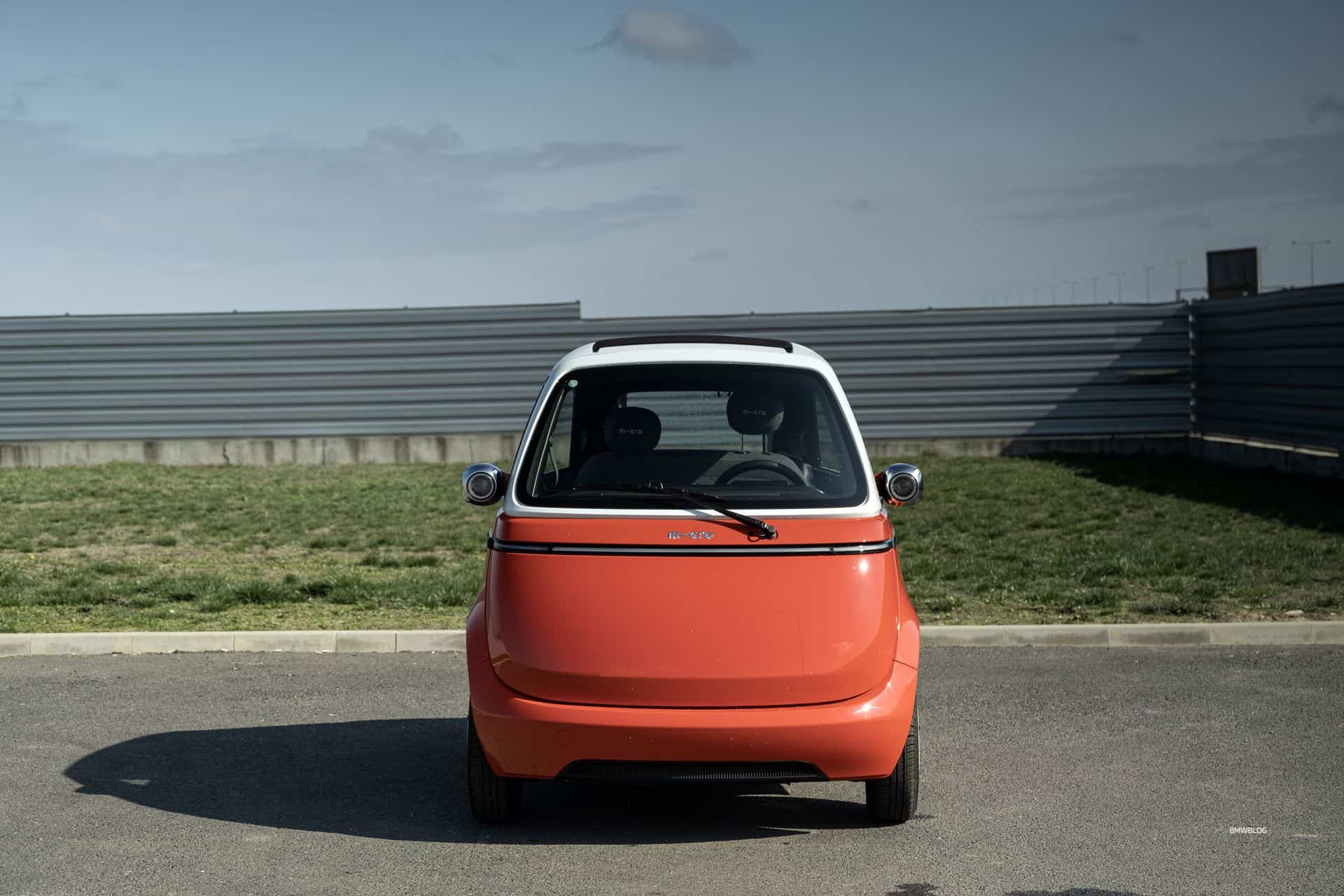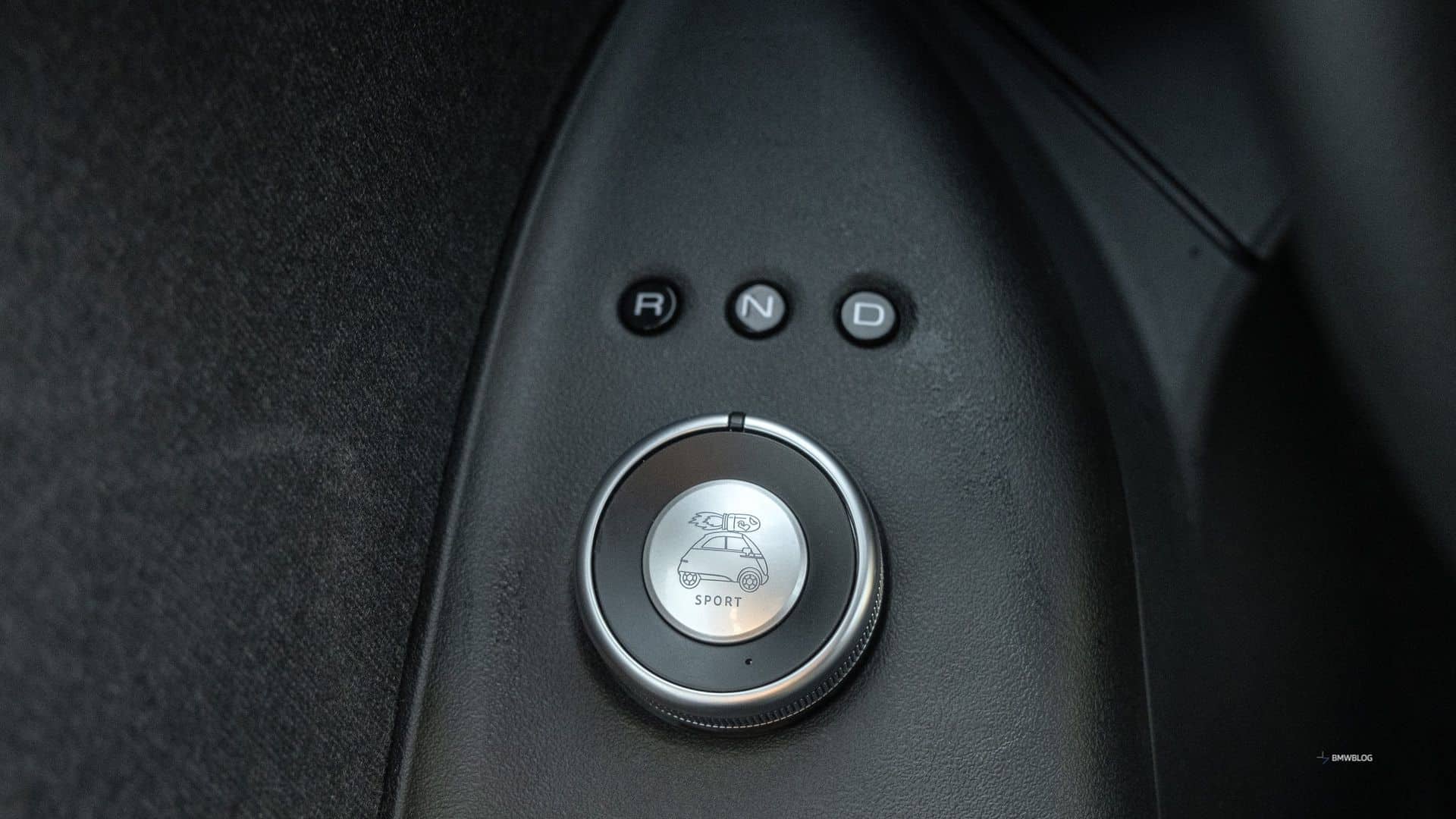The BMW Isetta is the quintessential bubble car, with an instantly recognizable shape. Its design is 100% Italian, but BMW’s engineering contribution made it a better, more capable vehicle, one that helped get Germans back behind the wheel after the country was ravaged during the Second World War. However, despite its important role in BMW’s history and icon status, the Bavarian automaker has never even considered making a modern reinterpretation of the Isetta, so another company has stepped in to do just that.
Blending Classic Charm with Futuristic Design
Meet the Microlino, created by the Swiss-based company Micro but built in Italy. Its design owes everything to the original Isetta, but it’s by no means a copy. It looks like a futuristic reinterpretation of the classic design, with full-width light bars front and rear, powerful LED headlights, and wheels that do a great job of blending modernity with classic charm.
Electric Power and Range
The Microlino is an electric vehicle with a 12.5 kW (16.7 horsepower) electric motor driving the rear wheels. It has a top speed of 56 mph (90 km/h), and it can sprint from a standstill to 31 mph (50 km/h) in 5 seconds, according to the manufacturer. Three battery sizes are available: 5.5 kWh, 10.5 kWh, and 15 kWh, which give the vehicle WLTP ranges of 57 miles (93 km), 109 miles (177 km) and 141 miles (229 km).
It weighs about 1,100 pounds (500 kilograms), and in Europe, it is classified as an L7a quadricycle. This means it’s not quite a car, so it lacks many features, like airbags, antilock brakes, traction control, power steering and power brakes. You can think of it more as a four-wheeled scooter that keeps you dry rather than a car because if you compare it to a car, it can’t compete with its comfort and features.
70 Miles of Range
The Microlino I drove had the mid-range battery pack, which provided about 70 miles (114 km) of range on a full charge in temperatures of around 53.6°F (12°C). That’s noticeably less than what the manufacturer says it will do, but given that its battery pack is air-cooled and has no thermal management, this is to be expected. It should come much closer to the range claim in warmer weather, with temperatures around 73.4°F (23°C).
Given the kind of vehicle this is, the middle battery option is the one to go for since it provides more than enough range to pop to the shops, it doesn’t add too much extra weight to the vehicle (dulling its already leisurely performance) and it also doesn’t cost a lot more than the base variant. The two larger battery packs also have a higher charging power of around 3 kW, which should charge the 10.5 kWh battery from flat to full in four hours.
This is clearly a vehicle designed for those who can charge it at home overnight because going to a public charging station and waiting around for four hours or more isn’t very practical. During my time with the vehicle, I charged it once for about an hour and a half and got the state of charge from 16% to 48% hooked up to an 11 kW AC charger.
Behind the Wheel of the Microlino
Driving the Microlino is an interesting experience. It doesn’t have all that much power, but its peak torque rating of 65 pound-feet (89 Nm) makes it surprisingly eager to accelerate, especially off the line. The more the speed builds, the slower it builds, and you need a long straight to reach its limited top speed.
The Microlino has independent suspension all around and very sharp and direct unassisted steering. The battery pack is under the seats and in the middle of the vehicle, so its center of gravity is nice and low. All of this combined makes taking corners at speed way more fun and less daunting than you may think, although if you need to brake suddenly, you really have to stand on the pedal to get the unassisted brakes to stop the vehicle.
There is plenty of stopping power, but you will have to press the pedal a lot harder than in a modern car. The same goes for the steering, which, if you don’t get the vehicle moving, will feel very heavy. All of this makes the Microlino a bit harder to drive than you might think based on its size, although it’s not a deal-breaker.
The big tradeoff of the Microlino’s sporty-feeling stiff suspension is a firm and sometimes uncomfortable ride. This is made worse by the extra-short wheelbase and the fact that the rear track width is narrower than the front, so you can’t avoid some potholes by driving over them—it’s not as bad as in a three-wheeler, but it’s close.
Life Aboard the Microlino
Life aboard the Microlino is pleasant. You get a bench seat where you and your passenger will be rubbing shoulders, but aside from that, there is ample room in all directions—it actually feels spacious. There is plenty of leg room and headroom, and the cabin feels airy and relaxing.
Materials are about as good as you might expect to find in a very cheap car, but the stalks behind the steering wheel and a couple of buttons feel like they were ordered from Alibaba. The rotary control to put the car into reverse, neutral and drive feels great, though, and if you press on the center, you put the vehicle in sport mode and unlock its full performance potential.
The mirrors are fully manual, and you have to reach out to adjust them. Given that they are in the same cowling as the headlight pods, they are a bit small, and they don’t offer the best visibility. I often felt like I had to look over my shoulder to make sure there was nothing in the blind spot before I changed lanes because the mirrors’ field of view didn’t give me the confidence to do it without taking a look.
Like the mirrors, the windows are also fully manual, and you slide them back fairly easily, as is the bench seat, which moves fore and aft. The vehicle also features a manual-opening fabric roof that somewhat mitigates the lack of air conditioning. You can drive the vehicle even at top speed with it open and it won’t create buffeting inside the vehicle.
But even though it can’t cool the air coming into the cabin, it can blow it at you quicker and even heat it thanks to what sounds like a hair drier hidden somewhere in the dashboard. It has to be the largest climate fan that I’ve ever heard in a car, but it does the job of bringing fresh air into the cabin and keeping you warm on a cold day.
Another source of noise in the Microlino is its motor. Like the climate fan, it is the loudest I’ve ever heard in an EV, making a noise not too dissimilar from a racing gearbox with straight-cut gears. The motor noise is always present, and it can get tiresome after a while, but given that this is a vehicle designed for very short journeys, it’s not that big of a problem—think of it like the electric equivalent of a noisy two-stroke engine, and you get the idea.
Micro says the Microlino can fit three crates of beer in its 230-liter trunk, which is surprisingly big for a vehicle with such a small footprint. I did the weekly shopping with it and found the trunk to be more than adequate for the task, making it a surprisingly practical vehicle.
The Microlino isn’t perfect, but it looks so good and drives well enough to make you forgive some of its flaws. You also have to get over its price, which starts at around €18,000 (just under $20,000). My tester cost around €21,000, and it can get even more expensive if you opt for the largest battery and the top trim level. For that kind of money, you can get an electric car like the Dacia Spring here in Europe, so the Microlino can’t compete in that respect.
Is the Microlino Worth the Investment?
However, it’s such a great-looking vehicle that offers a unique driving experience and plenty of day-to-day practicality that people who may have wanted to buy a fancy scooter will add a bit more to their budget and go for one of these. It feels special too, right from the moment you press the button to open the front-mounted door that rises by itself, just like it did in the original Isetta. You can’t drive the Microlino with a frown, and people will smile, point and take photos of you as you drive by as if you were driving some exotic supercar… or some sort o tiny spaceship.











